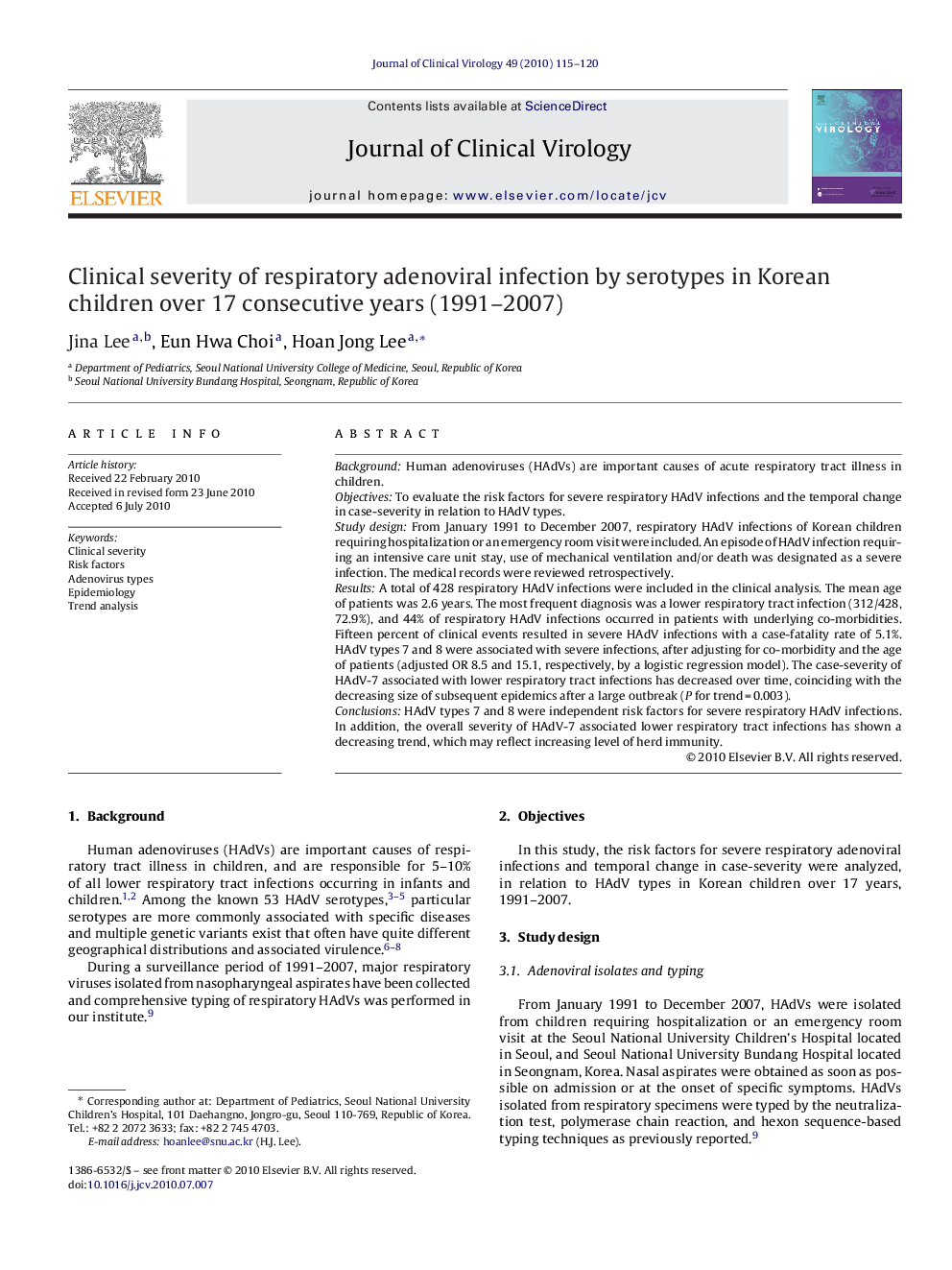| Article ID | Journal | Published Year | Pages | File Type |
|---|---|---|---|---|
| 3369370 | Journal of Clinical Virology | 2010 | 6 Pages |
BackgroundHuman adenoviruses (HAdVs) are important causes of acute respiratory tract illness in children.ObjectivesTo evaluate the risk factors for severe respiratory HAdV infections and the temporal change in case-severity in relation to HAdV types.Study designFrom January 1991 to December 2007, respiratory HAdV infections of Korean children requiring hospitalization or an emergency room visit were included. An episode of HAdV infection requiring an intensive care unit stay, use of mechanical ventilation and/or death was designated as a severe infection. The medical records were reviewed retrospectively.ResultsA total of 428 respiratory HAdV infections were included in the clinical analysis. The mean age of patients was 2.6 years. The most frequent diagnosis was a lower respiratory tract infection (312/428, 72.9%), and 44% of respiratory HAdV infections occurred in patients with underlying co-morbidities. Fifteen percent of clinical events resulted in severe HAdV infections with a case-fatality rate of 5.1%. HAdV types 7 and 8 were associated with severe infections, after adjusting for co-morbidity and the age of patients (adjusted OR 8.5 and 15.1, respectively, by a logistic regression model). The case-severity of HAdV-7 associated with lower respiratory tract infections has decreased over time, coinciding with the decreasing size of subsequent epidemics after a large outbreak (P for trend = 0.003).ConclusionsHAdV types 7 and 8 were independent risk factors for severe respiratory HAdV infections. In addition, the overall severity of HAdV-7 associated lower respiratory tract infections has shown a decreasing trend, which may reflect increasing level of herd immunity.
